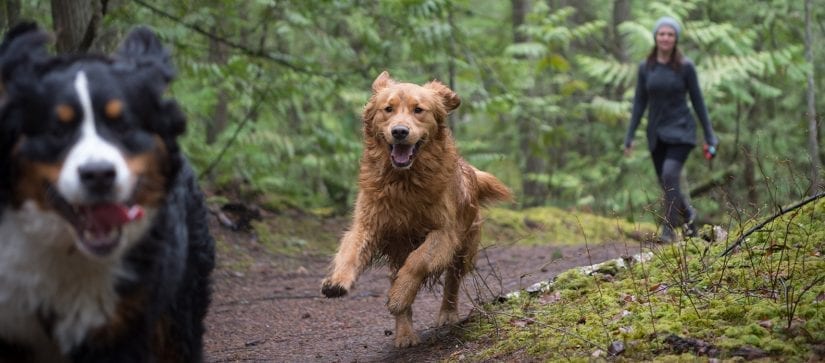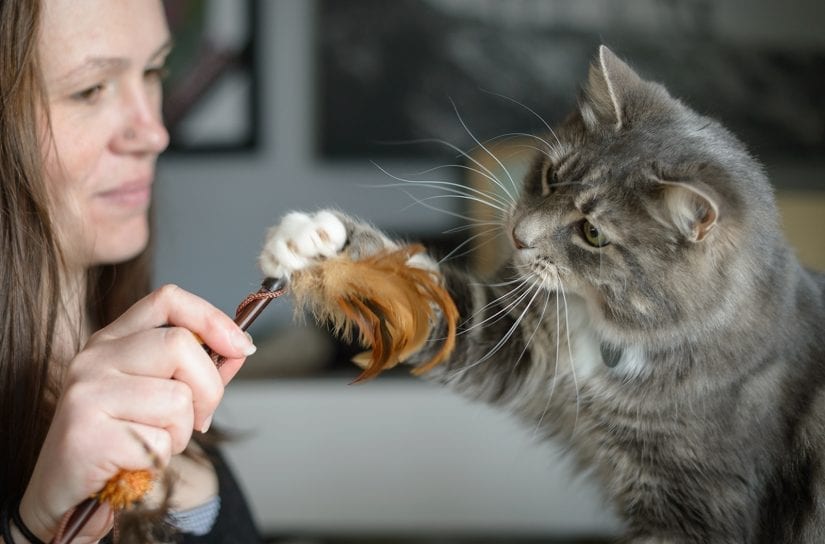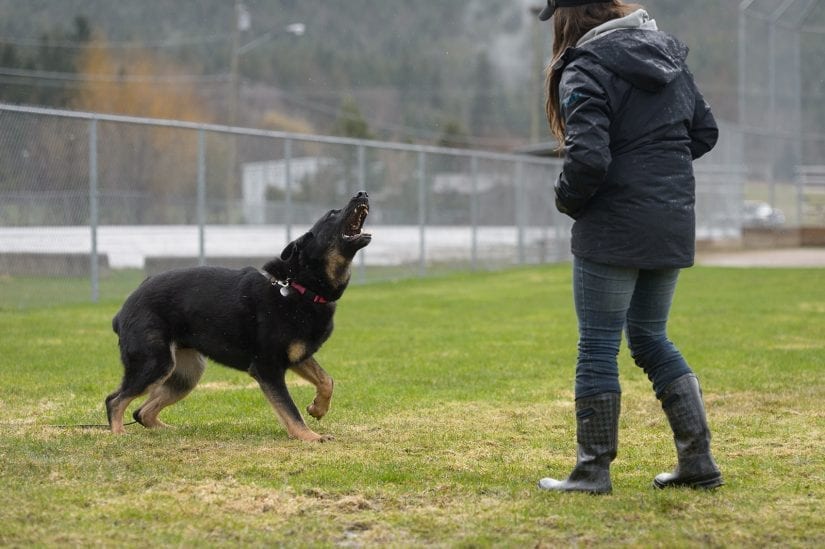Pet care & behaviour
The beauty of dogs is that they are social animals who adapt to our lives. They come in every shape and size you can imagine. Our job as a guardian is to care for them, train, understand their behaviour and protect them. Dogs are wonderful companions who we need to keep happy & healthy. Learn the best way to welcome a new dog into your home.
Typical dog life span
Medium to large dogs: 8 – 14 years
Small dogs: 10 – 16 years
How to keep your dog happy and healthy
Dog food and feeding
Puppies need good quality puppy food. Adult dogs will thrive on a quality dry kibble. Consult the feeding guidelines provided on the bag or can for how much your dog should eat in a day. It is common for most dogs to eat twice a day — in the morning and at dinner time. Puppies may need three meals a day.
Some dogs need special diets. Talk to your veterinarian about the best diet for your dog.
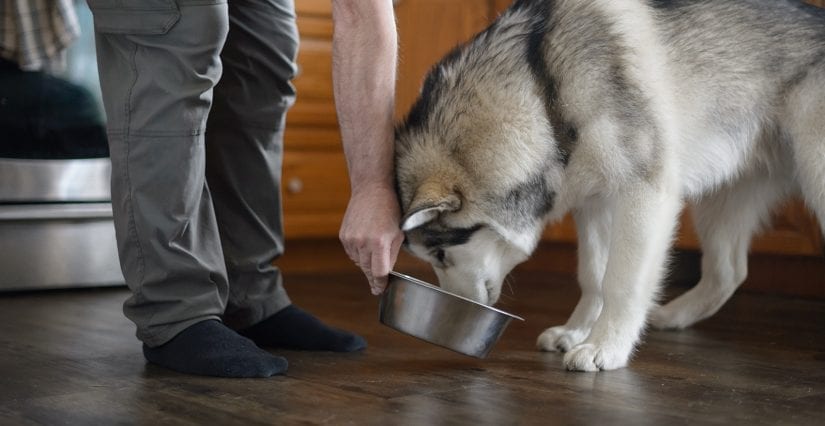
Treats
Dogs love treats. They’re important when training your dog. Use treats to reward your dog when he gets something right. It’s like saying thank you or paying him. You can even use your dog’s kibble as treats- they won’t know the difference. Save the yummy treats for things like calling him back to you or when he’s at the vet and nervous.

Your dog must have access to fresh water all the time. Change the water daily and wash out the bowl regularly.
Dog grooming, teeth and nail trimming
Choose a pet service business that prioritizes your dog’s welfare. Learn what to ask so you can confidently choose the right pet care provider.
Grooming
All dogs, whether short or long hair, need grooming. Longer haired dogs need to be brushed daily to keep mat free. Some might need to go to a dog groomer for grooming. Regular brushing will help you detect fleas or any lumps, bumps or skin conditions your dog may have.
Teeth
Just like humans, dogs need their teeth brushed for good oral hygiene. They can’t do it themselves so we have to brush their teeth. Use a soft tooth brush and dog tooth paste and try to brush every day. Never use human tooth paste. Go slow and make sure you have treats to give your dog after his brushing.
Nails
When standing, your dog’s nails should not be touching the ground. On average, nails should be trimmed once every month by a vet, dog groomer or yourself at home. Talk with your vet or local dog groomer for tips on how trim nails. Great care must be taken that you don’t trim too much. You can cut the blood vessel in the middle of the nail called the “quick.”
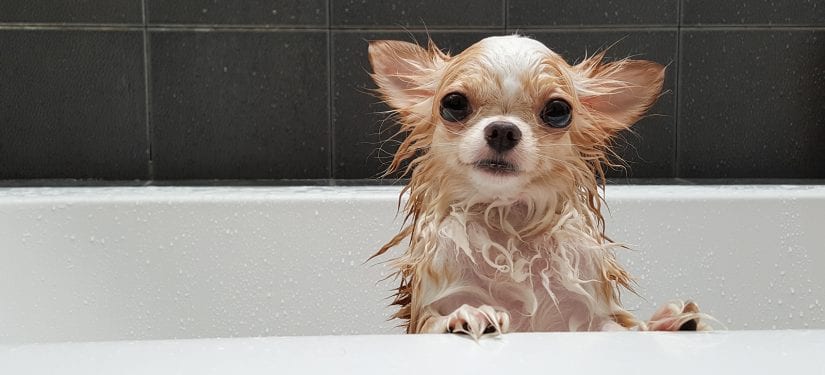
Exercise your dog
All dogs need exercise, no matter how big or small. Different breeds of dogs need different amounts of exercise but they all need to run and play every day. One or two short walks for a bathroom break is not enough. Leaving a dog in a back yard is not enough. Playing fetch, or taking your dog to an off-leash park where he can run around safely is best. If you’re not sure how much exercise your dog needs talk to your vet.
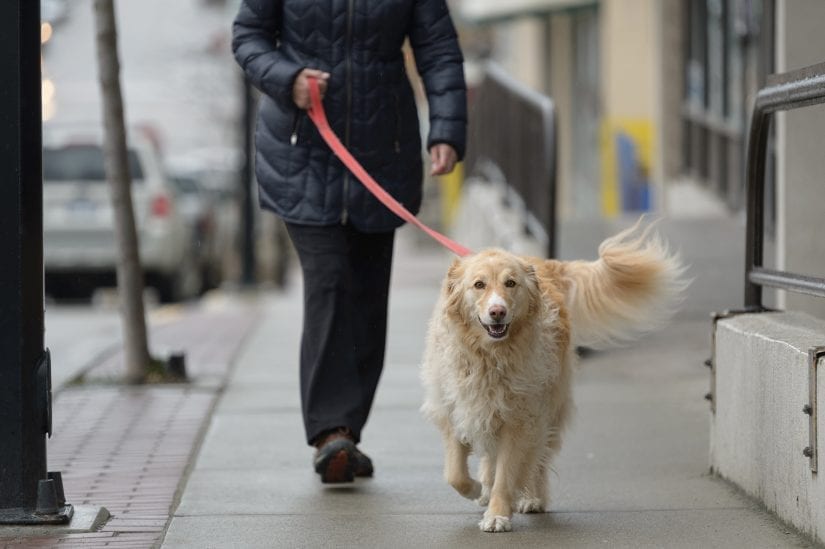
Things to do with your dog
Feeding
- Feed your dog in a dog food puzzle (feeding toy / smart toy)
- These toys get him to work to get the food and make him think
Chewing
- Dogs need to chew
- Chewing something safe and yummy for dogs is like us getting into reading a good book
Sniffing
- Let your dog sniff on walks – they’re born to sniff
- Hide treats and encourage your dog to sniff them out – this game will tire them out
Exercise
- Walk at least 30 minutes twice a day – older dogs may need short walks
- Hike with your dog, give him lots of time to sniff things
Play
- Play one-on-one games with your dog like tug-a-war or hide & seek
- Rotate through their toys so old toys become new ones to them
- Set up play dates for your dog to play with a dog friend
- Take your dog to the dog park for play with lots of dogs – if he’s good with other dogs
- Even dogs who don’t play may enjoy a visit to the dog park – make sure the other dogs don’t bug them and they’re not scared
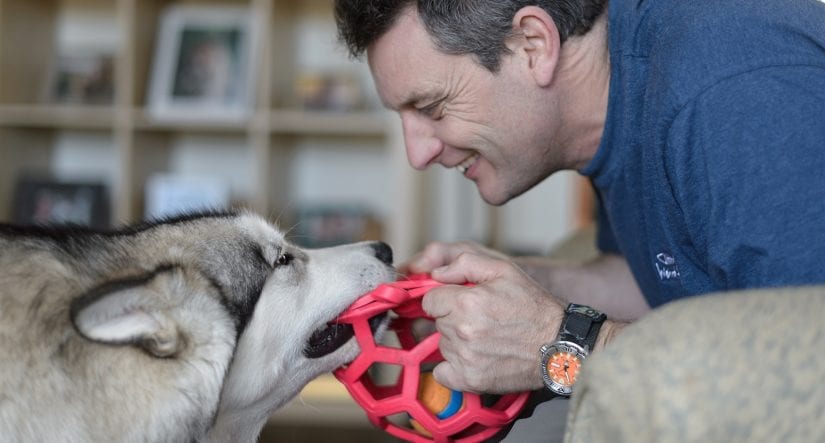
Identification (ID) for your dog
Nobody plans to lose a pet. Prepare for the unexpected and ensure your dog has two forms of identification.
It is also important to have your dog licensed – it’s the law. The license number will help people find you if your dog is lost. Check with your city, municipality or regional district about licensing and where to buy one.

Where should your dog sleep? Indoors or outdoors?
Dogs should be kept inside with their family. They are social animals who like to be around people. Set up an area with a comfy bed or blanket that your dog can call his own.
If you let your dog outside in a yard, it should only be for short periods of time. He should have a warm, covered place, away from wind, sun and rain. He must also have a dry place to lie down and fresh water. Best never to leave your dog outside unattended. If your dog is outside, learn what kind of shelter he needs.
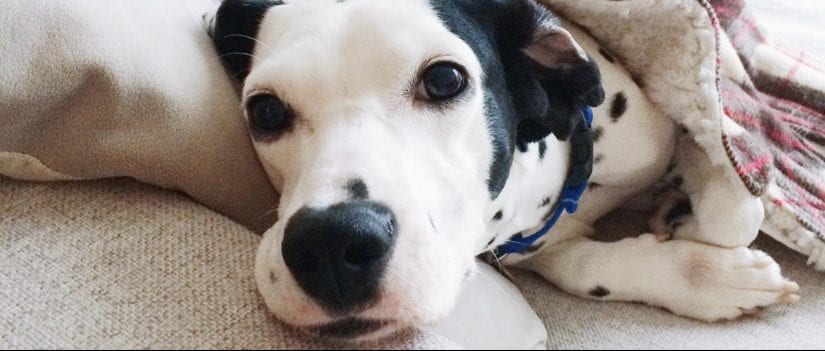
Medical care for your dog
When you first get your dog, take them to see a vet. After the initial visit with the vet, you should plan to go back at least once a year for a check-up and vaccines. Puppies will need to go back more often at first for vaccines.
It is also important to have your pet spayed or neutered to prevent unwanted litters. There are also many behavioural and health benefits to sterilization. Learn more about the benefits of spaying or neutering your pet.
Always watch for lumps and bumps, your dog not eating or a change in their behaviour. If you notice anything different talk to your vet. Find a veterinarian in your area.
Learn how to make your dog or puppy’s vet visit less stressful.

Training your dog
A dog needs to learn what we want him to do or not to do. Learning about his behaviour and how to teach him what you want is one of the best things you can do for your dog. If he knows exactly what you want he’ll be happier and safer.
Training a dog:
- Takes time
- Patience
- Should be fun
- Works best when you use treats – it’s like saying “yes” you got it right
- Takes practice – like people learning to play an instrument like the piano or guitar
Never use harsh verbal or physical corrections training a dog. Choose a humane trainer who follows the BC SPCA Position Statement Animal Training.
Did you know the BC SPCA has standards for humane dog training (PDF)? We can help you find a good dog trainer through our AnimalKind program.
Overcoming your dog’s behaviour issues
Some dog behaviour is normal for a dog but we find it annoying or think it’s bad. Other times dogs have behaviour issues. Jumping up, being afraid of people or things and reacting are just a few issues we see regularly.
We can help dogs, by better understanding and managing dog behaviour and ensuring they get enough exercise, enrichment and training.
Preventing and reducing excessive dog barking
Preventing or reducing excitable dog behaviour (PDF)
Preventing and reducing dog behaviour problems (PDF)
Yes! In fact, Petsecure Pet Health Insurance provides a complimentary six-week trial of pet health insurance with every dog and cat adoption.
With pet health insurance, you can lower the stress of paying for large, unexpected or unplanned expenses with a monthly premium.

Bringing a new dog into your home is an exciting time. For a dog going into a new home, it will be stressful. You know where everything is and you’ve been through your home lots of times. For a new dog this will be the first time he’s seen your living room, your kitchen, or even seen your cat.
Remember everything is a first for him in your home. Think of it being like when you moved into a new home or got lost in a new town. Have patience, understanding and be forgiving if your new dog doesn’t know something.
To make it easier on your new dog and to help him get use to your home, it’s best to plan for his arrival and his first few days. Below are some ideas of what you will need to get and plan for.
Want to print this page as a checklist (PDF)?
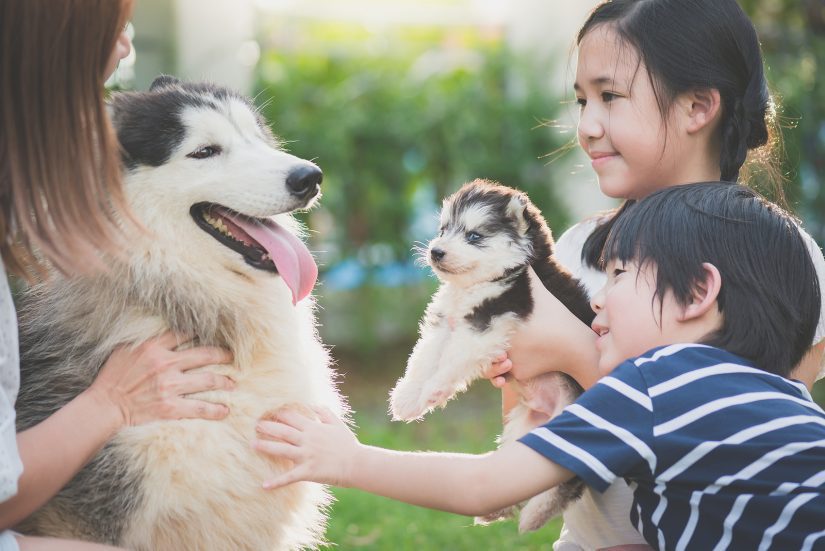
Before you bring your new dog home
Dog supplies needed
- Food: Make sure you have some of his previous food so you can mix it with his new food if it is different. Switching to a new food without a slow transition can cause diarrhea.
- Food & water bowls: Have the right size bowls for your dog. Check with your veterinarian to see if your dog’s bowls should be elevated off the ground.
- Collar & harness: Put a collar on your dog even if you only walk him on a harness. Collars will have his I.D. tag and license on. Do not use a choke, prong or any collar that causes pain, stress or injury.
- Dog toys: Toys are an important part of helping your dog engage in normal dog behaviour. Get toys that are appropriate type, size and safe for your dog.
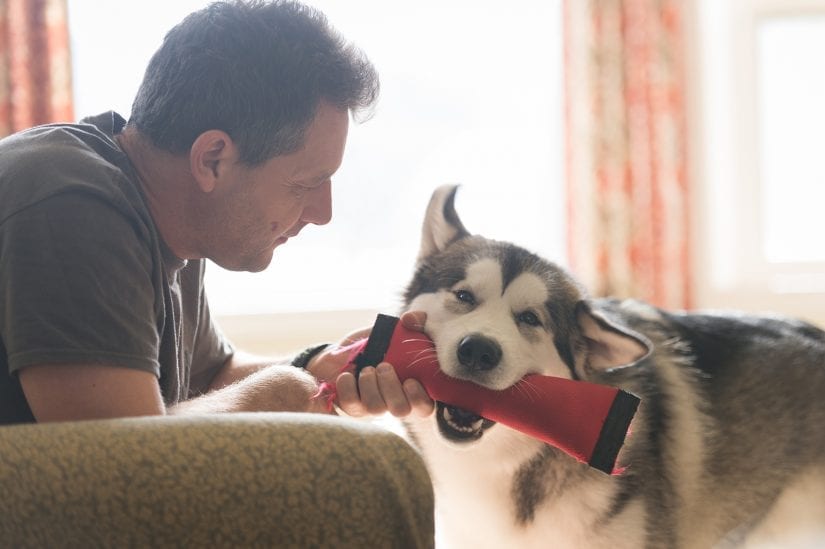
- Dog puzzle feeding toys: Also known as smart or work to eat toys, they’re a fun way for your dog to work to get his food. These feeding puzzles engage your dog in doing natural scavenging behaviour. Some dogs will need to be shown how to use them at first.
- Kong: Kongs that are the right size for your dog are great smart feeding toys. You can fill them with food and freeze them for your dog.
- Bed: Get one or two comfortable beds and have them ready for when he comes home. Don’t forget his bed from the animal centre, other home or rescue. It might be used however its familiar and will help when he moves in to lower stress.
- Crate: Make sure the crate you get is the right size for your dog. A puppy will need a smaller one and as he grows, he’ll need more space. Your dog must be able to stand up, turn around and lay so he can stretch out comfortably in his crate.
- Pee pads/puppy pads: If you have a puppy be prepared. Where will you put the pee/puppy pads, how will your pup know where they are?
- Exercise pen: It’s always a good idea to use an exercise pen for puppies or new smaller dogs. These are ideal when you can’t supervise and you’re working housetraining and chewing issues.

Things to plan for before your new dog comes home
Where will he…
- Sleep
- Go to the washroom – if it’s a puppy where will the puppy pads be, where will he go when outside?
- Stay during the day – a crate, a dog proof room, at day care, with you?
- Stay during the night – a crate, a dog proof room, with you?
- Crate – will his crate be in the kitchen, living room or your bedroom?
- Walk – where will you walk him, can he go to the dog park, what if he doesn’t like other dogs?
How will you…
- Housetrain an adult dog or puppy – what’s your schedule? Puppies need out more often.
- Reward him – for going to the washroom outside, where will you keep treats so they’re handy.
- Train him – yourself or hire a qualified humane trainer.
- Crate train – not all dogs are crate trained, you’ll need to train him & crate train puppies.
- Introduce to cat – has he met cats before, how do you introduce and keep your cat safe?
- Handle your pup – it’s important to teach your puppy to be good with handling, they’re not born liking it.
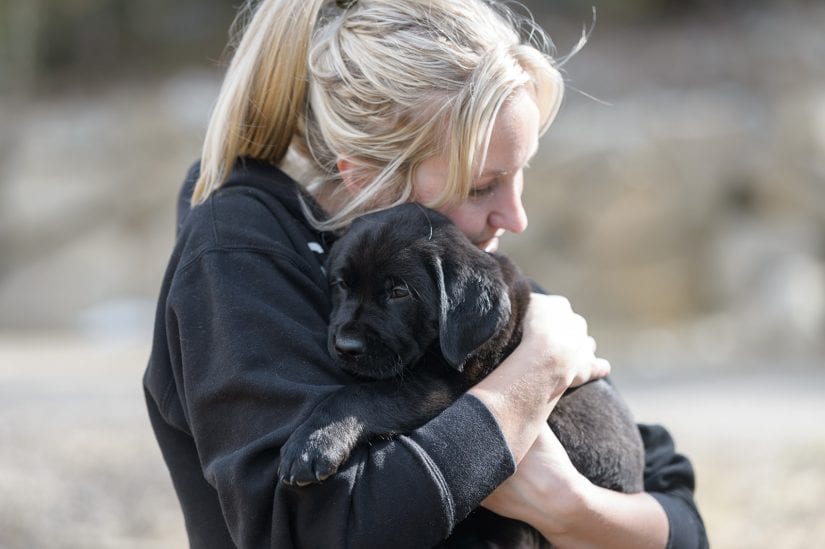
How…
- Much food – should you feed him, when and how often?
- Long in crate – how long will your dog or pup be in a crate? Too long is cruel and not fair.
- Dog proof room – setup a room with safe dog toys, bed, food & water when you can’t supervise.
- Trainers – how will you choose a qualified humane trainer?

What about…
- His things from animal centre, other home, rescue – take as many of his things as you can. His bed and toys will help when he has them in his new home.
- Routine – set up a schedule so your dog learns your routine, this will help make things predictable for him.
- Veterinarian – when will he go for first visit, which veterinarian will you use?
- Behaviour problems – what will you do if there are some you didn’t expect?
- Elevator – has he been in an elevator before? How can you help him if he’s scared?
- Daycare, dog walking, grooming – learn what questions to ask when choosing pet services
Remember, you are not alone anymore when choosing a pet service like daycare, boarding, walking, or grooming that prioritizes the welfare of your pet. Take advantage of the resources available at the BC SPCA AnimalKind website.
It’s important to try and think of everything you might need for your new dog. Get your home set up beforehand, so when your dog does come home you can focus on him and helping him move in.
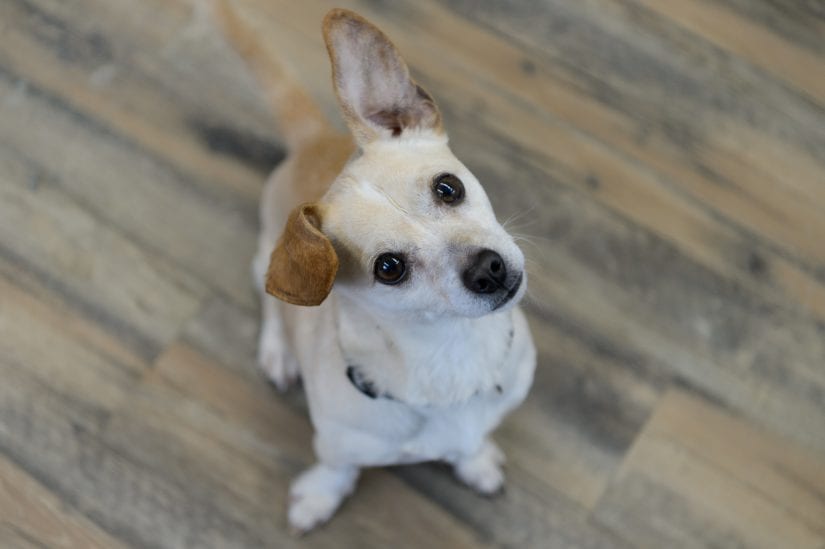
New dog moving in
Day one
-
- Bring him in the house on leash and let him sniff – let him get use to your home.
- Take him out regularly for bathroom breaks – don’t forget to reward him with a treat after he goes.
- Remind kids how to approach him and that the house is all-new to him.
- Take him for a walk – bring treats and let him sniff the neighbourhood.
- Teach family, neighbours and strangers how to approach your new dog for petting.
- Put his bed and some toys from his previous home out.
- Your goal during his first day is to help him learn about your home and have good experiences.
Note – don’t bring your new dog or puppy home and just leave him alone while you go out.
What’s next?
- Veterinarian visit – take your dog to the vet for a checkup and a microchip if he doesn’t have one.
- Learn about basic dog care.
- I.D. your pet and get your dog license – visit your local animal control and get a license. It’s the law and it will help get your dog back to you if he ever gets lost.
- Contact the animal centre, previous owner or rescue with questions.
- Have fun!
Print this page as a checklist
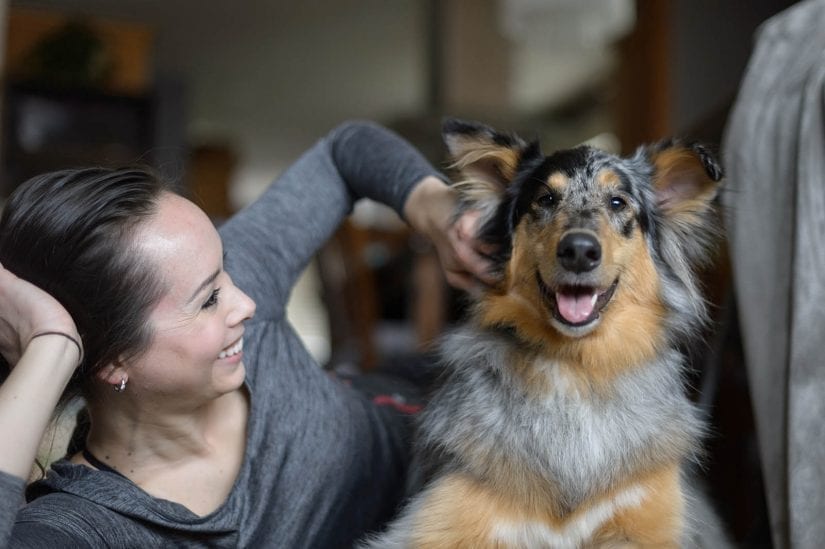
Dogs bark for many different reasons. Figuring out the why behind your barking dog is the first step to treating the problem. Here’s a list to start with:
-
- Is your dog suffering from boredom?
- Does your dog have anxiety being alone?
- Is your dog fearful?
- Is your dog attention-seeking?
- Is your dog a ‘watchdog’?
1.) Boredom barking
Feed him with smart toys. Make sure he’s getting exercise and mental stimulation.
2.) Anxiety barking
See your veterinarian for diagnosis and treatment plan.
Find more information in our fact sheet Separation anxiety – Preventing and reducing dog anxiety when alone (PDF).
3.) Fear barking
Teach your dog that the things he’s afraid of are fantastic and predict fantastic things. Choose a humane trainer to help you and your dog.
Did you know the BC SPCA has standards (PDF) for humane dog training? We can help you find a good dog trainer through our AnimalKind program.
4.) Attention-seeking barking
Many dogs bark to get attention or to make their guardian do something such as take them out or play with them.
To stop attention-seeking barking, stop rewarding him for it.
Don’t throw the ball, open the door or let him out of his crate if he is barking. These are all rewards to your dog.
He barks = ball goes away
He’s quiet = ball gets thrown
5.) Watchdog barking
Teach him to do something that isn’t compatible with barking. Teach him to get his toy so he can’t bark because he has his toy in his mouth.
Give him a time out
Teach him any time he barks more than a few times it results in him going in the penalty box.
Time out
- After he barks say “quiet”
- Next bark say “too bad” and immediately put him in another room
Eventually he’ll learn his barking causes him to be removed from the action.
Veterinary help for barking dogs
Deaf, geriatric and dogs suffering from separation anxiety may all bark excessively. Check with your veterinarian to see if there are any health reasons for the excessive barking.
Caution
Do not use any tools or techniques that cause physical or emotional distress, such as electronic shock collars. Learn why your dog is barking and then train him or provide enrichment. Barking is a natural dog behaviour.
Resources
BC SPCA Position Statement Animal Training
Barking – Preventing or reducing excessive dog barking (PDF)
There are lots of things to consider before you get second dog:
- Is your dog ok with another dog living in his home?
- Does he just like his doggie friends at the park?
- Maybe fostering a dog will help you and your dog test the waters?
- What are the extra costs of having a second dog?
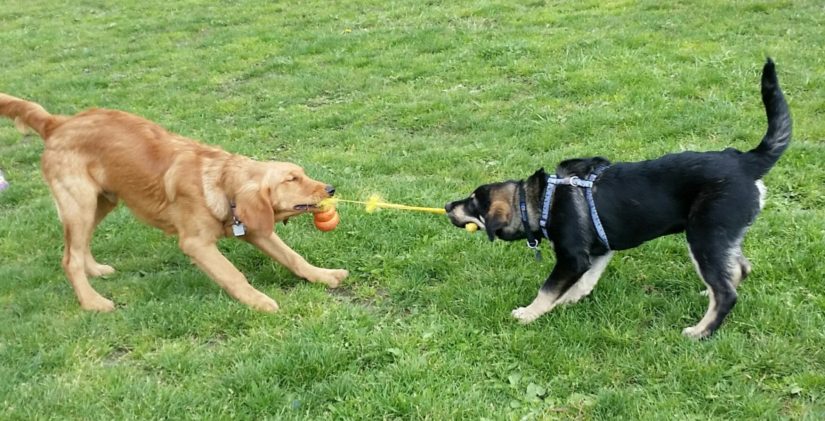
You may think it’s a great idea however your dog may not want a live-in buddy.
Learn more about whether you should get a second dog, watch our video:
“Spaying” and “neutering” are surgical procedures used to prevent pets from reproducing. In a female animal, “spaying” consists of removing the ovaries or uterus and ovaries. The technical term is ovariectomy or ovariohysterectomy. For a male animal, “neutering” involves the removal of the testicles, and this is known as castration.
In addition to preventing unwanted offspring, spaying or neutering has many health and behavioural benefits to the animal.

If you are adopting your cat, dog or rabbit from the BC SPCA, spay/neuter is included in the adoption fee.
For other animals, the cost of spaying or neutering your pet depends on many factors and will vary according to each pet’s circumstances and needs. For example, a large dog will cost more than a small dog. If your pet is overweight or in heat this can also add to the cost. Contact your veterinarian to get a more accurate idea of the costs involved for your pet.

The cost of spaying/neutering is small when compared to other costs of pet care, such as what you will spend on food for your pet over their lifetime.
Consider the possible costs if you do not spay or neuter. If your pet should wander off in search of a mate, you may be faced with paying fines and impoundment fees. You may also be faced with the additional costs of caring for puppies or kittens for whom finding homes may be difficult. Worse yet, think of the costs should your pet be injured while roaming for a mate.
Spaying or neutering is a one-time investment with life-long health and welfare benefits for your companion.
If you require financial assistance, learn about low-cost spay/neuter programs in B.C.
Vaccines protect your pet from getting diseases that are contagious and possibly fatal. Vaccinating your pet doesn’t just protect your pet, it also protects other pets in the community who may be too young or sick to be vaccinated. Vaccines also protect against some diseases that can be passed from pets to people.
All cats and dogs should receive vaccines. Your veterinarian can help determine which vaccines are necessary and the best schedule for vaccinating based on your pet’s lifestyle and age.
Talk to your veterinarian about vaccines for your pet.
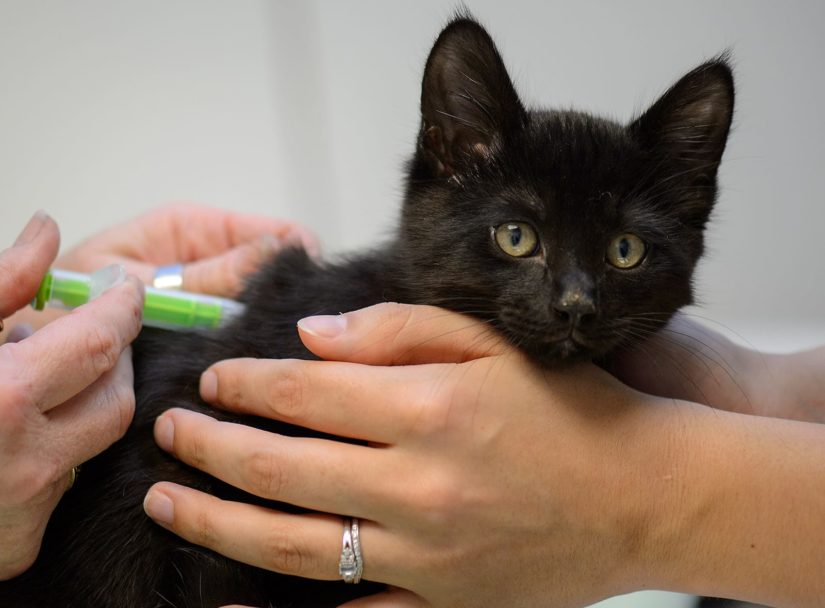
Puppies and kittens should start their vaccines at six to eight weeks of age. Your puppy or kitten will need a series of vaccines before they are four months old. Schedules for adult animals may vary depending on lifestyle and vaccines needed.
Rescue animals may require more frequent vaccines while they are in the care of an animal centre due to a high risk of exposure to disease.
Talk to your veterinarian about when to vaccinate your animal.
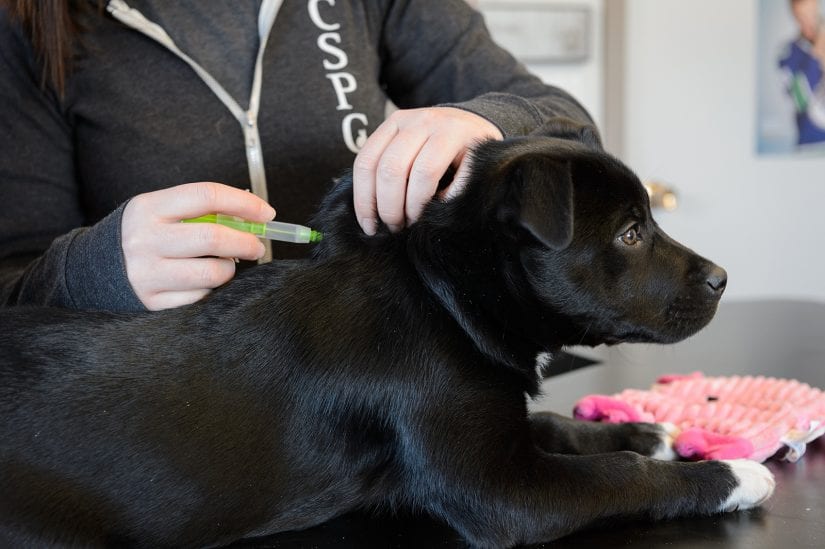
Most antifreeze is made from ethylene glycol. Ethylene glycol-based antifreeze tastes sweet but is highly toxic to both humans and animals. To help protect pets, wildlife and children, the provincial government passed a regulation that requires the addition of a bittering agent to all antifreeze sold at the consumer level in British Columbia. The regulation, the first of its kind in Canada, took effect in 2011.
While a bittering agent may make antifreeze less appealing, ethylene glycol is still harmful, even in small amounts. Consumers should be encouraged to use antifreeze made from propylene glycol instead. Propylene glycol-based antifreeze is slightly more expensive, but is considered non-toxic to pets and wildlife.
Antifreeze facts
- Antifreeze is the brightly coloured liquid that is poured into radiators and circulates through engines to keep them operating at safe temperatures.
- All cars, trucks, buses and farm tractors use antifreeze to help prevent their engines from freezing over in the winter and overheating in the summer.
- Conventional antifreeze contains ethylene glycol, which is very poisonous to people and animals.
- Even in the smallest amounts, antifreeze can have a very harmful and often fatal effect on your pet. A single teaspoon will kill a cat and a few tablespoons are enough to kill a medium-sized dog.
- Antifreeze leaks from automobiles and is spilled in garages and onto pavement due to careless fluid changes.
- In some instances, antifreeze has been used to deliberately poison animals as an act of cruelty.

What do I do if my pet consumes antifreeze?
Animals who have ingested antifreeze go through two stages of symptoms. If untreated, death from kidney failure will occur within days.
If you suspect your animal has ingested antifreeze, seek veterinary aid immediately. YOUR PET WILL NOT RECOVER ON THEIR OWN. Time is critical as within minutes your pet will begin to experience kidney damage. Learn what to do if your pet has consumed antifreeze.

Use animal-friendly antifreeze
Fortunately, there is a less toxic alternative to the ethylene glycol-based antifreeze that is most commonly used. Animal-friendly antifreeze contains propylene glycol and is anti-corrosive, biodegradable and recyclable. This makes it a better choice for the safety of pets and wildlife, personal health, vehicle engine protection and the environment. It may cost a few dollars more but it could save lives. Make the switch today!
Customers can request pet-friendly propylene glycol antifreeze from their automotive service centre or purchase it separately and ask that their auto centre to install the product.
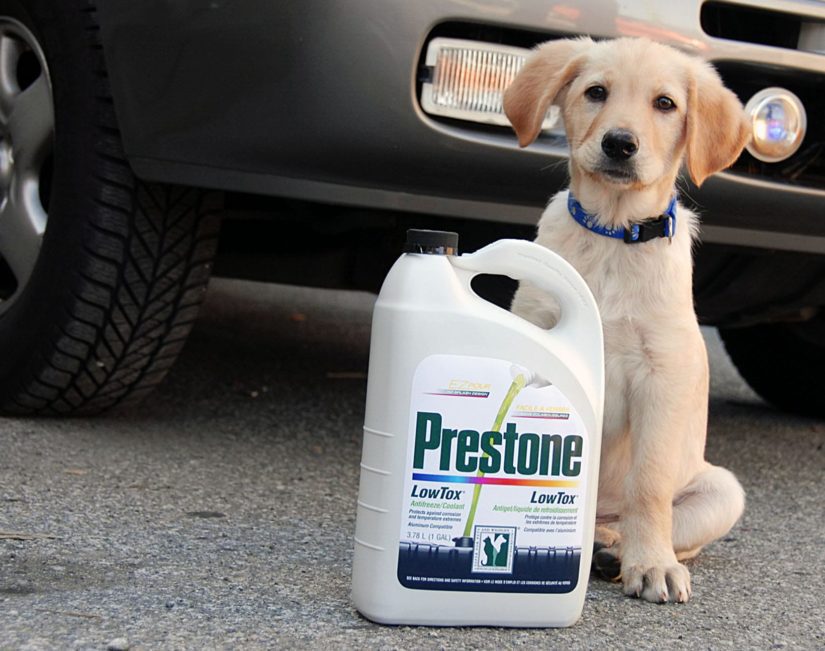
What can I do to help?
- Download our poster today and help spread the word! (PDF)
- Mop up spills and dispose of antifreeze properly.
- Take used ethylene glycol or propylene glycol antifreeze to an auto centre that recycles antifreeze.
- Never pour any used antifreeze (ethylene glycol or propylene glycol) down storm drains, sinks, toilets or on the ground. B.C. has a network of collection facilities that accept used antifreeze (ethylene glycol and propylene glycol), oil, oil filters and oil and antifreeze containers at no charge. Visit the B.C. Used Oil Management Association website to find a location near you or contact the Recycling Council of B.C. at 1-800-667-4321 for a list of outlets.
- Find out more about cold weather pet safety and how to keep your furry family members safe during cold weather.
What is the rabies virus?
Rabies is a viral disease of warm-blooded animals that can be transmitted to humans. It is caused by a virus of the Rhabdoviridae family, which attacks the central nervous system and eventually affects the brain. Rabies is almost always fatal in animals and people once symptoms occur.
How is rabies transmitted between animals and humans?
The virus is transmitted through close contact with the saliva of infected animals, most often by a bite or scratch. It can also be transmitted by licks on broken skin or mucous membranes, such as those in the eyes, nasal cavity or mouth. In very rare cases, person-to-person transmission has occurred when saliva droplets became aerial. Bat bites can inflict small wounds and go unnoticed.
Who is at risk of being infected by rabies?
Bats are the only known wild carrier of rabies in B.C. Like cats and dogs, raccoons, coyotes, skunks, farm animals, and any other mammals are capable of contracting the rabies virus, but are not considered carriers in B.C.
In other provinces like Ontario, raccoons, coyotes, skunks and foxes are wild carriers of rabies. In B.C., however, the only carrier of rabies is bats; no raccoons or skunks in B.C. have ever transmitted rabies.
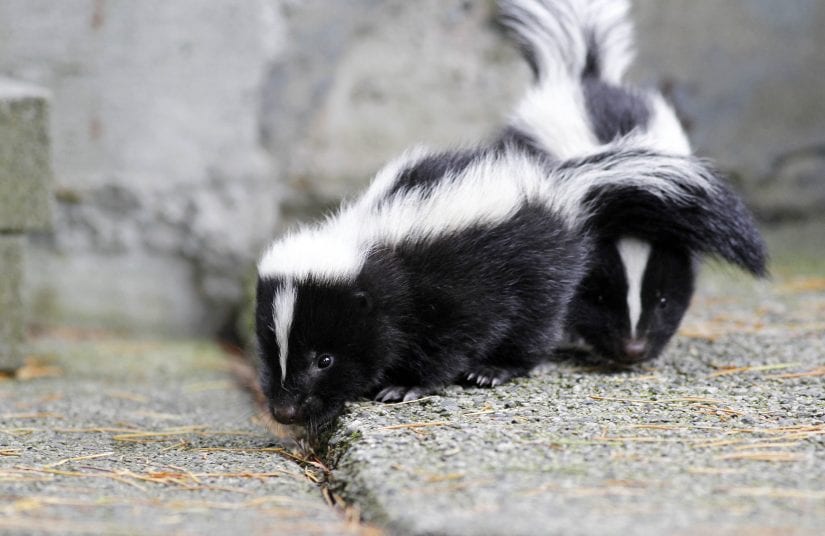
How common is rabies in bats in B.C.?
It is estimated that one per cent of bats in the wild in B.C. carry rabies. In June 2004, four skunks in Stanley Park in Vancouver tested positive for the rabies virus. However, it was discovered that they all carried the bat strain of rabies; likely they had all been in contact with a rabid bat.
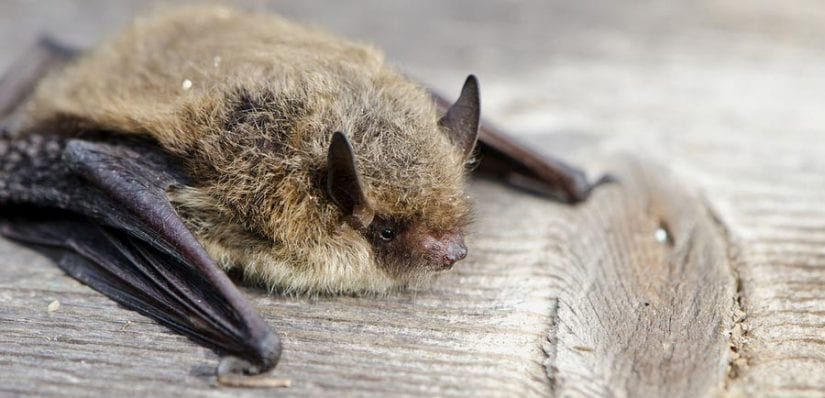
Cases of human rabies infection in Canada
In the past 25 years, five people in Canada have died of rabies infection: one in Quebec (2000), one in Alberta (2007), one in Ontario (2012) and two in British Columbia (2003 and 2019). In the Ontario case, rabies exposure occurred outside the country. These were the first cases of human rabies in Canada since 1985.
The most likely source of infection for both B.C. individuals was unrecognized bat exposure. Without wound cleansing or post-exposure vaccinations, the potential incidence of rabies in exposed humans can be very high.
Does my pet need a rabies vaccine?
Dogs and cats account for fewer than five per cent of all animal rabies cases in Canada. However, rabies presents a serious public health risk, and even indoor pets could come in contact with a bat. Some pets also need the vaccine for travel. Ask your vet whether your pet should be vaccinated.
What if my pet brings a bat home?
If your pet brings home a bat, you should take your pet to a veterinarian. If the bat is available, your vet may send it for rabies testing. Additionally, your vet may vaccinate your pet against rabies and/or ask you to keep your pet in your home for several months to see if they develop signs of rabies.
If any person in your household has touched a bat with bare skin, seek medical attention from a doctor or local public health unit immediately.
What will happen to the bat?
The bat may be euthanized and sent for testing. As of April 1, 2014, CFIA veterinary inspectors are no longer involved in species collection activities. However, the CFIA continues to perform and cover the cost for rabies laboratory testing involving domestic and wild animals and humans. This is vital as once the symptoms of rabies (flu-like including fever, headache and fatigue, progressing to gastrointestinal and central nervous system problems) start to appear, there is no treatment and the disease is almost always fatal. However, wound cleansing and immunizations, done as soon as possible after suspected contact with an animal, can prevent the onset of rabies in virtually 100 per cent of exposures.
What to do if there has been contact with a bat
Bat-to-person contact?
If treatment is given promptly after being exposed to (any bare skin contact) or bitten by a bat, the illness may be prevented by taking the following actions:
- Immediately wash the wound or exposed surface with soap and water for 10 minutes and cover the area with a clean bandage.
- Remove any clothing that may have been contaminated.
- Immediately call your doctor and local health authority for advice.
Bat-to-pet contact?
Please contact your veterinarian to have your pet vaccinated and discuss whether a period of isolation/observation is required for your pet. If the bat is available, your veterinarian may send it for rabies testing.
Found an injured bat?
No matter how injured, a bat should never be touched with bare hands. Please refrain from nudging or picking the bat up.
Injured bats can be rehabilitated by professionals able to take the necessary precautions against rabies transmission. Call the BC SPCA Animal Helpline at 1-855-622-7722 for advice on safely containing bats and finding a wildlife rehabilitator.
Allowing a female cat or dog to produce a litter does not have any benefits to the animal. Animals who go through heat cycles and pregnancy are at higher risk for uterine and mammary problems, including mammary cancer, which can be fatal.
There are health risks to the mother during the pregnancy and when giving birth. Proper pre-natal care, emergency care for birth complications, and proper newborn care are expensive and time-consuming.
Learn more about the benefits of spaying and neutering your pet.

Most unintentional litters (particularly with cats) occur because guardians waited too long to have the surgery done. The usual recommendation is before six months of age for cats, and before six and a half months for dogs. Consult your veterinarian to determine the best time for your pet. Female cats and dogs do not have to have a litter before being fixed.
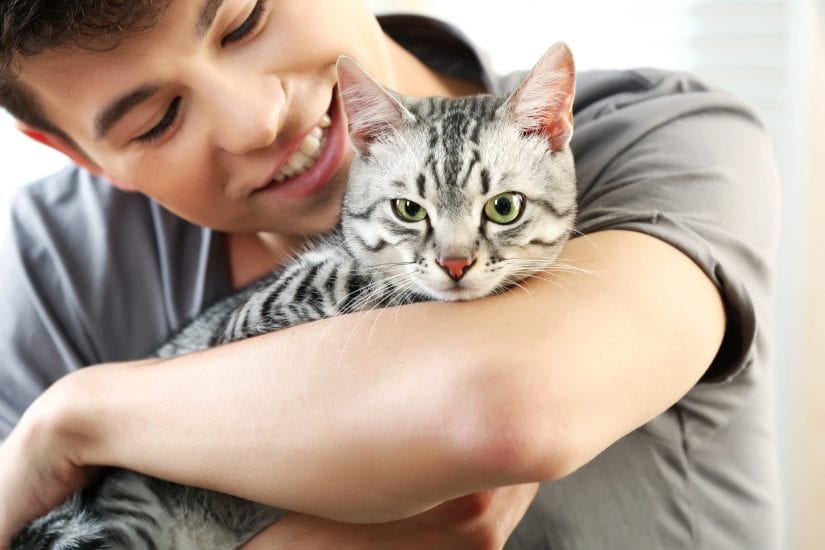
The BC SPCA supports early age spay/neuter procedures for dogs and cats. Pediatric sterilization prevents excess litters by ensuring animals are sterilized before adoption. This helps combat pet overpopulation and euthanasia of unwanted animals. All major professional, academic, and animal welfare organizations in North America support pediatric spay/neuter for shelter animals.
The BC SPCA will continue to promote other methods of combating pet overpopulation, including education and public awareness campaigns, non-surgical methods of sterilization, traditional spay/neuter initiatives and behaviour training.
The BC SPCA believes pediatric spay/neuter to be appropriate with the following qualifications:
- The procedure takes place between 8 and 16 weeks of age
- The animal is judged to be clinically normal and healthy prior to surgery
- Proper surgical protocols specific to these young animals are employed
- Post-surgery complications receive special attention
No. Your pet will actually benefit from spaying or neutering, because he or she will lead a healthier and longer life. Pets become fat and lazy as a result of overeating and a lack of exercise, not from spaying or neutering. Furthermore, spaying a female eliminates the possibility of her developing uterine and/or ovarian cancer and greatly reduces the chance of breast cancer. Neutering a male eliminates the risk of testicular cancer.
